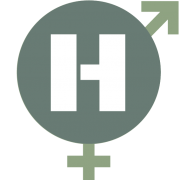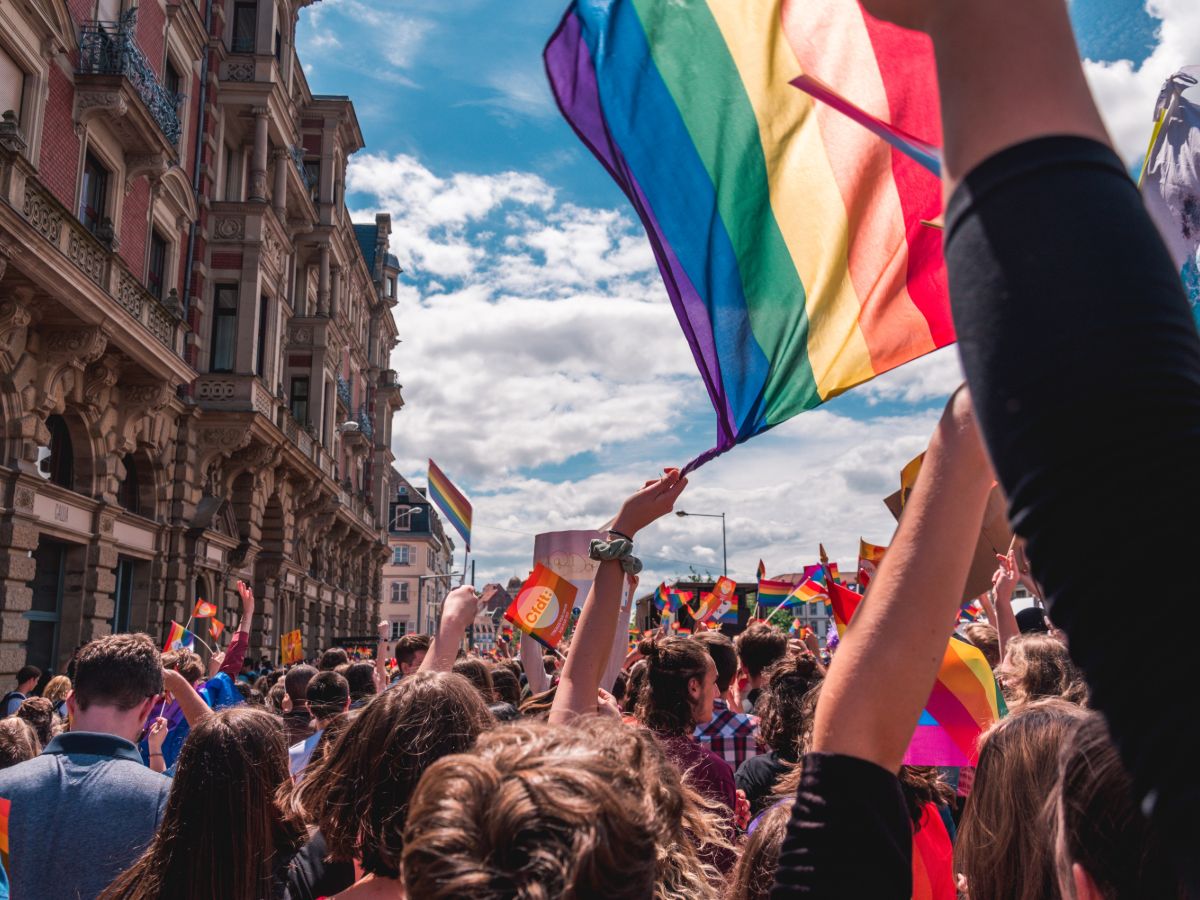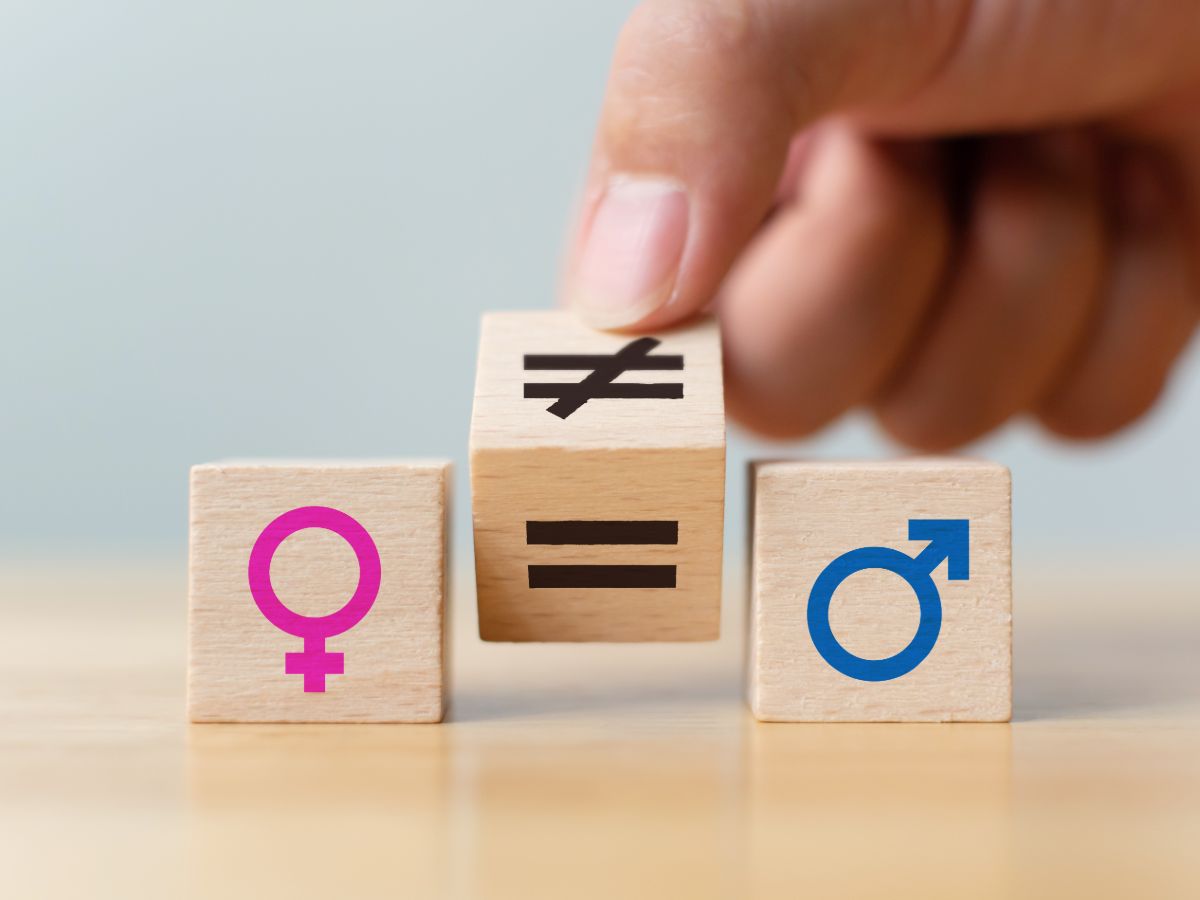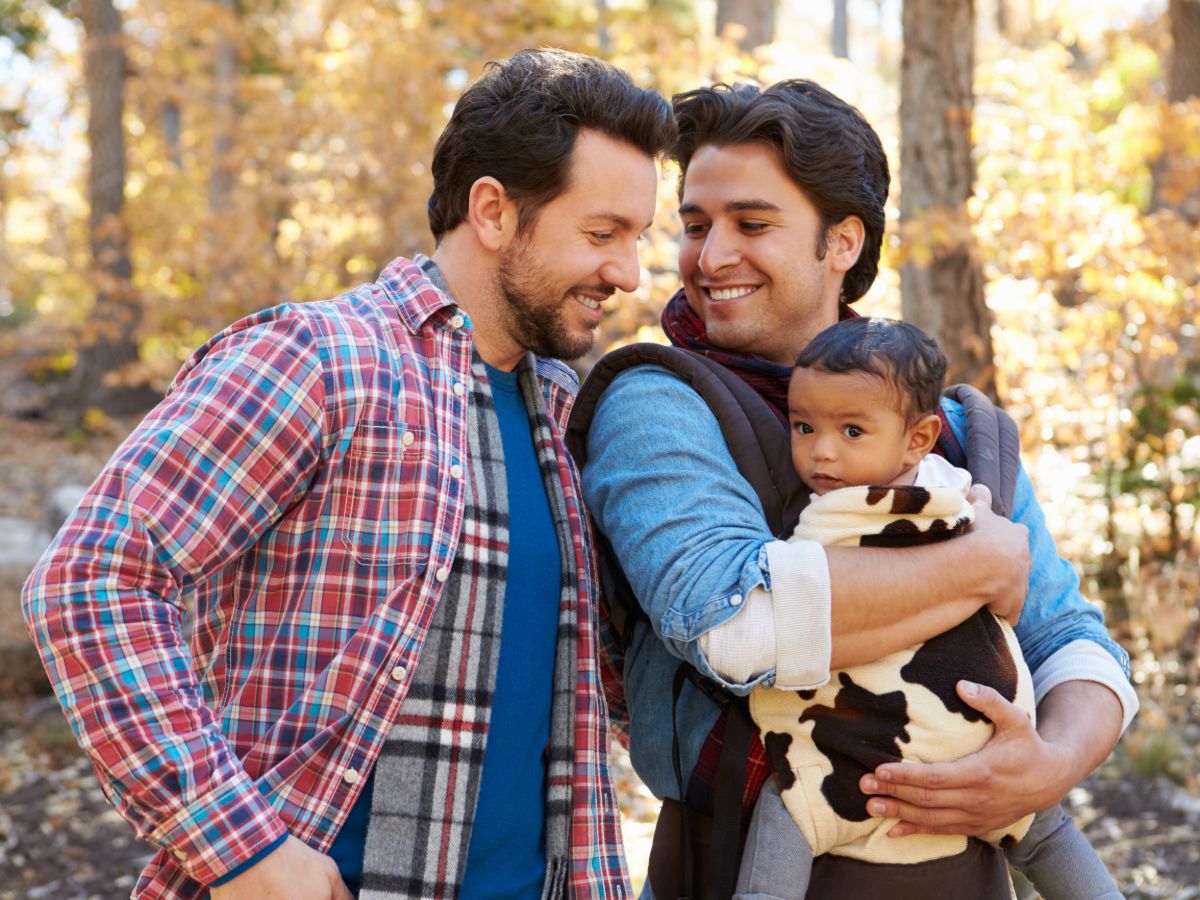
In its emphasis, our ABC reflects that the term “minority protection” is generally claimed by the so-called “old” minorities (→ What is a “Minority”?). Advocacy of such “old” or “traditional” minorities often look at the political energy that is put into the protection of vulnerable groups, as a scarce resource. Thus if someone gains more attention, someone else will receive less so. Correspondingly, in some corners efforts to expand the concept of “minority protection” to include “new” minorities (→ Kaleidoscope of Demographic Change) are seen with a certain degree of hesitation. Further, both old and new minorities sometimes bear an anxious reluctance to being “lumped” together with Homo- and Transsexuals under the umbrella term “minorities”. This is understandable in the sense that the state itself must be aware of the different needs of its populations if it aims to provide accurate recognition and protection. On the other hand, it is counterproductive for a society’s imperilled groups to compete for political attention: the protection of diversity is not a zero-sum game. Every group that is in a socially disadvantaged position because of its otherness should be aware that appreciation for a specific form of social diversity will also spill over into greater tolerance for diversity in more general terms and thus served also other socially disadvantaged groups.
Lesbians, gays, bisexuals and transgender people as a threat to traditional gender roles?
Photo: rawpixel/Jira
What connects the so-called “LGBT” community with immigrants is that both are constantly the subject of vehement debate between the political fronts. And as with immigration policy, attention should be paid to the contribution of human rights, particularly the separation of political issues from the legal sphere, thus depoliticising (or rationalising) the debate as much as possible. For example, the question of whether homosexuals can enter into a traditional marriage is a political issue, while the question of whether rights comparable to marriage rights have to be granted to gay couples on the basis of discrimination bans is a legal question. Of course, the boundaries between politics and law are not always crystal-clear. And often ideological struggles are fought on the backs of small social groups; the otherness of the LGBT community is still able to cause astonishing fears amongst certain corners of the majority population. For example, one occasionally still hears of homosexuality as being a “disease” to be cured, particularly in the conservative fringes of the church. This implies the idea of a risk of infection. Indeed, it seems that a fear is being cultivated that deviance from the statistical norm of sexual behaviour may in the midterm future displace the standard sexual orientation. Given that for millennia hardly 10 percent portion of the population have been homosexual, this fear seems absurd and justifies to talk about “homophobia”.
The amount of political opposition to broad-minded provisions supporting transsexuals seems even more remarkable given that this group is so statistically small (in Germany, the estimate is between two and four thousand individuals in a country that has a population of around 80 million). In the defensive reaction against the sexually “different”, it becomes apparent that homosexuality challenges the traditional roles of the sexes and transsexuality challenges the understanding of gender in itself. This is perceived as a social challenge – not altogether dissimilar from the challenge faced by traditional minorities (questioning the linguistic and cultural unity of a nation) or immigrant minorities (questioning the historical continuity and the religious composition of a territory).
The still-sceptical attitude toward sexual ”deviants”
A 2006 Eurobarometer survey across all EU Member States showed that the Europeans are only conditionally willing to consider LGBT individuals as equal. This is true not only in the specific case of child adoption, but can also be detected with regard to an issue that is – so one would assume – only of relevance to the LGBT community itself, namely the issue of same-sex marriages. It was found that only 37 percent of Europeans believe that same-sex marriages should be allowed anywhere in Europe. Furthermore, the range of attitudes among the various countries was striking, suggesting that the subject of homosexuality can hardly rely on trans-European consensus. While less than a sixth of the populations in Romania, Latvia, Cyprus and Bulgaria support the general equality of gay marriage, the approval rate in Belgium (62%), Denmark (69%), Sweden (71%) and the Netherlands (82%) is more than four times as high. European attitudes are similarly diverse when it comes to the question of allowing adoption by same-sex couples: All in all, only a quarter of Europe’s population supports such adoptions. Approval rates range from well below 10 percent in Malta, Poland, Latvia and Romania to more than 50 percent in Sweden and almost 70 percent in the Netherlands.
But it is important to note that the omnipresent issues of so-called “gay marriage” and adoption rights for homosexuals are merely the tip of the iceberg of open issues. To understand why the question of open or hidden discrimination is indeed relevant, it is helpful to remember that even in Europe’s not too distant past, homosexuals were commonly classified as a criminal. In Austria, homosexuality was punishable by death until 1787, when the punishment was reduced to “mere” forced labour – by doing so it was considered the most modern country of the time! The development of an increasing perception of homosexuality as an equal expression of autonomous sexual self-determination was and continues to be slow. For instance, Paragraph 175 of the German Penal Code from which the German slang for homosexual men “175ers” derives remained in force until 1994. It forbids homosexual acts between males as a punishable offense and put it next to “unnatural fornication with animals” until 1969. This shows the persistence of an obscure legal legacy. The first European criminal justice system – the Constitutio Criminalis Carolina, created in 1532 by Karl V – declared in its Article 116 that to engage in “unchaste conduct between men and cattle, men and men, or women with women is to forgo life”. Ergo: homosexuals were burned at the stake.
Today, there is a European consensus that homosexual behaviour is not a crime. When homosexuality became legal in Armenia in August 2003, the European ILGA (International Lesbian and Gay Association) celebrated that Europe was free of discriminatory persecution for the first time in 1500 years. On the global level, the situation is quite different. In some 80 countries, homosexuality is still punishable by law. In more than a handful of countries, people continue to be threatened with punishment because of their sexual orientation, even the death penalty! When the EU Presidency issued a declaration to decriminalize homosexuality in the UN General Assembly on 18 December 2008, only 39 countries (most of them European or South American) joined the 27 nations of the EU. 57 states (such as North Korea – a country that purports to harbour no homosexuals) were against it. 69 of the 192 UN Member States abstained – including political heavyweights such as China and Russia. Even the United States did not participate in this declaration – supposedly deferring consideration to the competence of its 50 states (which is unconvincing, as the declaration has no binding legal implications).
Politics and Law: LGBT treatment in conflicts of values and law

Photo: Unsplash/Margaux Bellott
An example of homophobic behaviour that may well win over the political elite pertains to the debate in Poland. In 2007, the Polish government approved a bill forbidding “homosexual propaganda” in schools. Principals, teachers and students are to be dismissed if they are actively committed to LGBT rights in the schools. The same applies to teachers who are out-of-the-closet homosexuals. The former Polish prime minister explained that promotion of the homosexual lifestyle to young people in schools as an alternative to a “normal” life had gone too far, and constitutes a distortion of the concept of tolerance. The Polish Ombudsman for Children even issued a list of jobs for which homosexuals are unfit. In June 2006, the Polish Public Prosecutor began a review of funding to LGBT organizations for alleged connections to “criminal movements” and regarding their presence in schools, in order to determine evidence of criminal conduct (the investigation was inconclusive). The same year, the Polish Government sacked the head of the Center for Teacher Education and forbade the distribution of an official European manual to combat discrimination. The newly appointed head of the Center explained that inappropriate role models should not exist in the schools, which have the duty to teach the difference between good and evil, beauty and ugliness, and must explain that homosexual practices lead to tragedy, emptiness and degeneracy. Furthermore, the Polish government has refused to co-finance EC youth program projects that are promoted by LGBT organizations. All of these developments have drawn strong criticism from the EU Parliament.
It is important to stress that European Union law does not affect the right of Member States, to legislate in “the sphere of public morality, family law as well as the protection of human dignity and respect for human physical and moral integrity” as is emphasised in Poland’s declaration attached to the Treaty of Lisbon (→ Lisbon Treaty). Member States and their governments are free to make autonomous decisions on social values. The Union must respect the “national identity” of the Member States. However, the EU Treaty makes it equally clear that EU integration is based upon “the principles of freedom, democracy, respect for human rights and fundamental freedoms and the rule of law”, and that these principles apply to “all Member States” (TEU Article 6). The EU Charter of Fundamental Rights, which became with entry into force of the Lisbon treaty legally binding, stresses that discrimination on the basis of sex or sexual orientation is unlawful (→ Discrimination). Certain political developments can indeed compromise these shared values. Particularly in the case of new Member States, incidents occurred that were of legal relevance: for example, LGBT demonstrations were prohibited (without sufficient cause), or permitted without assuring the demonstrators sufficient protection against acts of aggression from other parts of the population. The legal issues go far beyond the freedom to demonstrate. Over the recent past political declarations, but also legally binding measures as well as case law of the European Courts in Luxembourg and Strasbourg contributed to the development of minimum standards for the protection of LGBT people that Member States have to guarantee.
The fight against discrimination on the basis of sexual orientation

Photo: Adobe Stock/Monster Ztudio
Instructions coming from “the EU” are not deriving from another star, but have been developed together with the Member States in Brussels. Then there are those guidelines “from Europe” that were developed in the Council of Europe. For example, the General Assembly of the Council of Europe called in 1981 upon the World Health Organization to end the classification of homosexuality as a disease (in fact, the WHO responded in 1990 and removed homosexuality from its list of diseases). At the same time, the General Assembly requested that the States decriminalize homosexuality and combat discrimination against homosexuals. In 1993, the EU Parliament adopted a milestone resolution (on the basis of the report by Claudia Roth of the German Green Party) advocating for the rights of homosexuals. It called for the repeal of differing legal protections for gays and lesbians as compared to heterosexuals in the areas of age of consent, social benefits, gender equality in civil and inheritance law, registered domestic partnership as well as barriers to adoption.
In 1997 the Council of Europe’s Commission for Human Rights Council of Europe concluded that in light of recent scientific findings that homosexual inclinations were anchored usually before puberty, a higher age of consent for homosexual relationships than for heterosexual relationships could no longer be tolerated. In 2003, the Court in Strasbourg ruled against Austria, stating that the unequal treatment under Paragraph 209 of the Austrian Criminal Code was devoid of objective and factual justification and thus is contrary to the European Convention of Human Rights (L. & V. v. Austria). Paragraph 209 of the Austrian Criminal Code set the age of consent for homosexual relationships at 18 years, while maintaining the age of 14 for relationships between women and men. Thus consensual sexual relationships were treated differently depending on whether they are homosexual or heterosexual. This special protection provision replaced a previous total ban on homosexual contact in 1973. The Austrian Constitutional Court had justified Paragraph 209, arguing (among other things) that these standards aim at protecting ”maturing young people from sexual aberration”. Such an argument seems removed from nowadays social reality: Homosexuality is no longer perceived as the result of an error, but rather, a different development.
Against this background, the European Court in Strasbourg, interpreted the European Convention of Human Rights (ECHR): Different treatment based solely on the basis of sexual orientation must be justified by very strong arguments, or else it is illegal. Even if the ECHR, unlike the Charter of Fundamental Rights, does not explicitly mention sexual orientation, it nevertheless also covers such inequalities (→ Discrimination). In a 1999 ruling made, the Court in Strasbourg held that the exclusion of homosexuals from military service could not be justified (Smith and Lustig-Prean v. United Kingdom). The British government had claimed that the integration of homosexuals into the armed forces had an extremely negative effect on troop morale, thus affecting the combat effectiveness and efficiency of the troops. The reason did not concern the physical or mental fitness of homosexuals, but rather the discomfort of the other recruits in the presence of homosexual colleagues. The Court made it clear that negative stereotypes against homosexuals cannot be the basis for justifying discrimination against homosexuals.
The EU Court in Luxembourg was initially far less resolute when it came to dealing with the phenomenon of sexual orientation. 1998, the Court denied the question of whether EU law precluded a British train firm from offering financial benefits exclusively to married couples or unmarried heterosexual couples (Lisa Jacqueline Grant v. South-West Trains Ltd.). It concluded that Community law covers only discrimination based on gender, and since in this case men and women were treated equally, no discrimination was observed. Moreover, the Court said that comparability of different-sex and same-sex partnerships was not recognized in Europe. Another factor in this decision was that the Court was probably reluctant to prejudge amendments to the EU treaties, as the former Article 13 of the EC Treaty was not yet in force (→ Discrimination).
Shortly thereafter, the legislature (Council and Parliament) responded on the basis of the then newly introduced Article 13: With the directive to combat discrimination in the workplace in 2000, the EU first proposed an instrument requiring states to combat discrimination in the workplace, including discrimination on the basis of sexual orientation. 18 Member States (Germany and Austria included) decided, when transposing this Directive into national law, to also ban this form of discrimination in areas outside the workplace. While the Racial Equality Directive provides in the context of discrimination based on ethnicity an obligation to establish specialized anti-discrimination bodies, this is not the case for discrimination based on sexual orientation. Only one country, Sweden, has established a specialised institution addressing specifically the issue of discrimination based on sexual orientation. However, at least 18 Member States have a body that is in part responsible for dealing with such discrimination. In Austria, this is the Equal Treatment Commission and the Equal Treatment Ombudsman, in Germany, the Anti-Discrimination Agency (ADS) in Berlin. While both of the equality bodies in Austria are primarily concerned with sexual discrimination in employment, the working range of the ADS is broader, as German legislation prohibits discrimination based on sexual orientation in many areas of live, including access to housing, education or health. (→ Discrimination). The ADS currently employs 20 staff in Berlin. Between August 2006 and December 2007, they received over 3659 requests, of which about 5 percent dealt with sexual orientation.
Preferences “from Europe” on the Concept of “Family”: Delicate Fine-tune

Photo: Adobe Stock/Monkey Business
Equality in civil and inheritance law, the possibility of registered same-sex partnerships and the right of homosexuals to adopt, are all policy fields falling within the core competence of state regulation. Nevertheless, even here, the supreme courts of the Council of Europe and the EU have identified certain minimum standards that have to be respected (→ Judiciary). Development was admittedly slow. The Human Rights Commission of the Council of Europe did not accept gay and lesbian lifestyles as “families” as protected under the ECHR. In 2003 the Court issued a ruling granting a homosexual partner the right to claim the term “spouse” under the terms of the Austrian Tenancy Act. This case concerned a man who had cared for his partner until his death. The landlord wanted to evict this caregiver after the death of his former tenant. The caregiver referred to the fact that marriage law aims to give cohabiters social and financial protection against homelessness, without having regard to family policy goals. The Austrian Supreme Court disagreed with this interpretation and to the contrary argued that the historical intention of the legislation was not to include homosexual couples, rather the scope of the legislation is to protect the traditional family. The response of the court in Strasbourg was that the protection of the traditional family can indeed form a justification for a differential treatment. However, so the Court, it has to show, why the exclusion of homosexuals from rent protection was necessary to protect the traditional family. The government was unable to provide evidence and arguments to this effect and consequently Austria was convicted of violation of the ECHR. For the plaintiff, this was no longer useful – he had already died in 2000. But for the civil protection of homosexual couples in Europe, it was an important step.
Recently also the European Court in Luxembourg has been occupied with the civil law issue of surviving homosexual partners (Tadao Maruko v. Retirement Fund of the German Theatre). Again, there was a more than long-standing homosexual relationship torn apart by the death of one of the two partners. In its decision of 1 April 2008, the Court ruled that in Germany, homosexual partners could be considered surviving heirs. This is since Germany created the institution of “civil partnership”, its conditions have gradually been made equivalent to those of marriage. Accordingly, if surviving (heterosexual) spouses and surviving (homosexual) partners are in a comparable situation, then provisions such as those at stake in the concrete case must also be extended to homosexual survivors of departed partners. However, whether or not an institution like a “civil partnership” is comparable to a marriage has to be assessed – so the European Court of Justice stated – by the national judge. This comparability was established by the German Federal Constitutional Court in a 2009 ruling.
The question of adoption has so far only been examined by the Court in Strasbourg. In 1999 there was decisive case concerning a man who lived in a same-sex partnership after his divorce from his ex-wife. Specifically because of this fact, his application for custody of his daughter from a previous marriage was rejected (Mouta Salgueiro da Silva v. Portugal). The Court ruled that denying his legal custody on the basis of his sexual orientation was a violation of the ECHR. Likewise, the Strasbourg criticised that the national court had instructed the man to not to give his daughter the impression that he was living with a man in a marriage-like relationship.
Three years later, the Court was confronted with the question of whether a denial of adoption rights to gays and lesbians is acceptable under the ECHR (Fretté v. France). This is one question that seems to divide not only society, but also lawyers: The Court ruled by a razor-thin majority that the ECHR does not preclude such a ban. In early 2008, the Strasbourg Court finally decided a case in which a woman in a stable homosexual relationship asked to be allowed to adopt a child (EB v. France). Her request went through all stages of appeal and was ultimately rejected by the Conseil d’Etat. The latter found that the two reasons given by the national authority, namely the lack of a male caregiver and the ambivalent attitude of the applicant’s partner towards the child do justify the denial of an adoption. The plaintiff, however, argued that the decision was based on their implied homosexuality. The Strasbourg Court agreed with the latter and qualified the decision by the national authority as unjustified discrimination. It is important to emphasize, however, that the Court did not specify in that case that homosexual couples have a right to adoption under the Convention. Rather, it noted that in those countries which also allow single people to adopt children (such as France), adoptions cannot be made dependent on the fact that the prospective adoptive father/parent is heterosexual, nor on the requirement of the presence of a caregiver of the opposite sex in the immediate environment. This is conclusive insofar as a country that allows single persons to adopt children indirectly also conveys the message that the combination of a “mother” and a “father” is not necessary for the adoption of a child.
Two take aways:
- Various estimates show that around 3-10 percent of the population are homosexual (including supposedly more men than women). The phenomenon of transsexuality, on the other hand, rests below the per mill range (including more male-to-female transsexuals than female-to-male transsexuals). However, trans- and homosexuality are ancient societal phenomena. Only the setting has changed. Homosexuality is no longer perceived as a result of an aberration, but simply as a different development.
- In light of new scientific findings and growing social acceptance, the judicial authorities in Europe have made a key contribution to equality for LGBT people. The aim is to separate the political issues from legal questions and to thereby rationalise the debate. Europe will not create a unified family model, but pave the way for a rationally based equality. While the various Member States still bear very large differences in terms of the social acceptance of LGBT people, a general and consistent tendency toward greater legal equality can be found.
